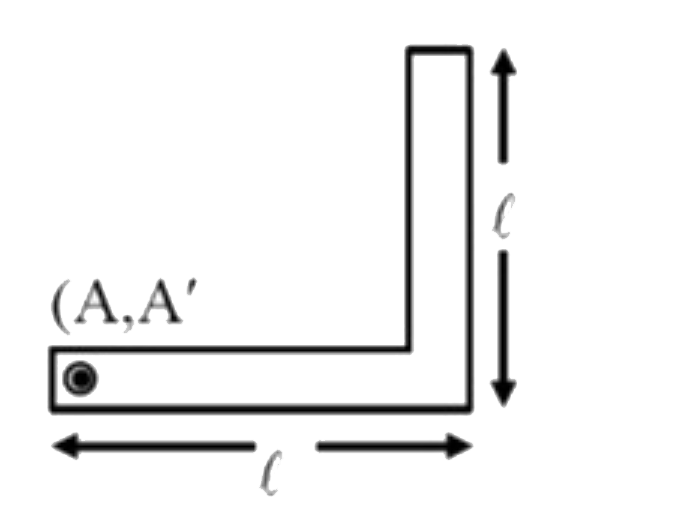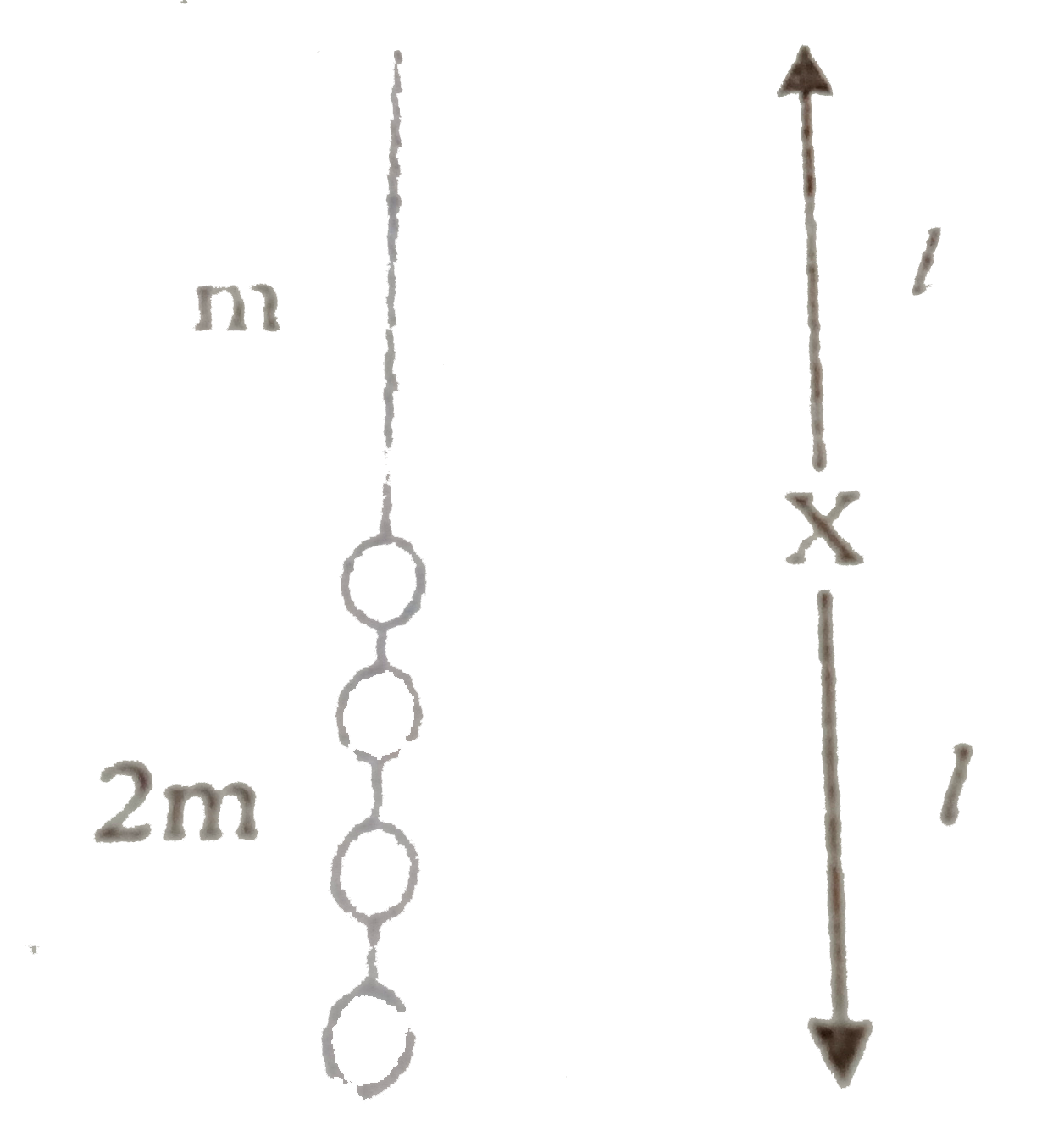Two beads of mass 2m and m, connected by a rod of length l and of negligible mass are free to move in a smooth vertical circular wire frame of radius l as shown. Initially the system is held in horizontal position ( Refer figure )

The minimum velocity that should be given to the mass 2m in clockwise direction to make it vertical is :
√5gl3
√7gl3
⎷(3√3−13)gl
none of these
The correct Answer is:C
The speeds given to 2m will also be possessed by m
∴KE in horizontal position gets converted in PE in vertical position.
122mv2+12mv2= change in PE in vertical position.

ΔPE=2mg[lcos30∘−lcos60∘]+mg[lcos30∘+l2]
2mg[l√32−l2]+mg[l√32+l2]
∴mgl[√3−1]−mgl[√3+12]
=mgl[√3−1+√32+12]=mgl[3√32−12]
K.E.=123mv2=mgl[3√3−12]
∴v=√3√3−13gl Ans.
∣∣y in anticlockwise direction we get.
V=
⎷(3√3+13)gl
Similar Questions
Two particles of mass m and 2m are connected by a string of length L and placed at rest over a smooth horizontal surface. The particles are then given velocities as indicated in the figure shown. The tension developed in the string will be

View SolutionTwo beads of equal masses m are attached by a string of length √2a and are free to move in a smooth circular ring lying in a vertical plane as shown in figure.Here a is the radius of the ring.Find the tesion and acceleration of B just ofter the heads are released to move.

View Solution
Knowledge Check
Two beads of mass 2m and m, connected by a rod of length l and of negligible mass are free to move in a smooth vertical circular wire frame of radius l as shown. Initially the system is held in horizontal position ( Refer figure )

The velocity that should be given to mass 2m( when rod is in horizontal position ) in counter − clockwise direction so that the rod just becomes vertical is :A√5gl3B ⎷(3√3−13)glC√32glD√52glTwo beads of mass 2m and m, connected by a rod of length l and of negligible mass are free to move in a smooth vertical circular wire frame of radius l as shown. Initially the system is held in horizontal position ( Refer figure )

If the rod is replaced by a massless string of length l and the system is released when the string is horizontal then :AMass 2m will arrive earlier at the bottomBMass m will arrive earlier at the bottom.CBoth the masses will arrive together but different speeds.DBoth the masses will arrive together with same speeds.A unifrom rod of length l and mass m is free to rotate in a vertical plane about A as shown in Fig. The rod initially in horizontal position is released. The initial angular acceleration of the rod is
 A3g2lB3glCg2lD2gl
A3g2lB3glCg2lD2gl
Two point masses m are connected the light rod of length l and it is free to rotate in vertical plane as shown in figure. Calculate the minimum horizontal velocity is given to mass so that it completes the circular motion in vertical lane.

View SolutionA L shaped rod of mass M is free to rotate in a vertical plane about axis A A as shown in figure. Maximum angular acceleration of rod is

View SolutionTwo small rings each of mass ‘m’ are connected to a block of same mass ‘m’ through inextensible light strings. Rings are constrained to move along a smooth horizontal rod. Initially system is held at rest (as shown in figure) with the strings just taut. Length of each string is ‘l’. The system is released from the position shown. Find the speed of the block (v) and speed of the rings (u) when the strings make an angle of theta=60^(@)withvertical.(Takeg = 10 m//s^2)

View SolutionA rope of length l and mass 'm' is connected to a chain of length l and mass 2m and hung vertically as shown. What is the change in graviational potential energy if the system is inverted and hung from same point.
 .
.
View SolutionA simple pendulum of mass m and length l stands in equilibrium in vertical position .The maximum horizontal velocity that should be given to the bob at the bottom so that it completes on revolution is
View Solution
